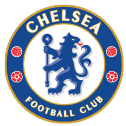What makes all 20 teams unique and how they’ll fare in 2021-22
Written by luck on October 7, 2021
Seven matches don’t tell us much in a 38-match season. It’s the equivalent of about three NFL games: enough to help us define stakes (and tell us who will have an uphill climb), but not enough to change title odds all that much.
Seven matches can be enough, however, to tell us about a team’s general quality levels and personality. With International Break No. 2 well underway and with a chance to actually step back and take stock, let’s look at what we’ve learned about each Premier League thus far.
– ESPN+ viewers guide: LaLiga, Bundesliga, MLS, FA Cup, more
– Stream ESPN FC Daily on ESPN+ (U.S. only)
– Don’t have ESPN? Get instant access
What stakes are they playing for? What makes them each unique little snowflakes?
(To help us define each group of teams, we’ll refer to FiveThirtyEight’s SPI projections and the odds associated with them. Any reference to odds below come from this.)
Jump to: Relegation battle | Stuck in mid-table | Europa League or bust | Four title contenders
The heart of the relegation battle
There’s still time for a plot twist, but the three teams relegated at the end of the season will likely come from this group of six teams.
 Norwich City
Norwich City
Performance to date: 1 point, -16 goal differential
Relegation odds: 70%
What makes them unique: They’ve been the worst team, and there’s probably no need to beat around the bush here. The yo-yo team of the day — first in Championship in 2018-19, last in the Premier League in 2019-20, first in Championship in 2020-21 — appears well-situated to keep this string going. The Canaries have scored the fewest goals and have tied for the most allowed. They have generated the lowest xG total and allowed the second-highest. They have the second-worst goal differential over the first 60 minutes, and by far the worst over the last 30. They’ve allowed the most touches in the attacking third and have generated the second fewest.
Their ceiling got higher with the loan addition of midfielder Mathias Normann from Rostov, and forward Teemu Pukki is still around to do Teemu Pukki things — he’s got both of the team’s league goals this season and is second on the team with four chances created. Their talent level isn’t dramatically worse than the other teams near the bottom of the table, but they’ve again dug themselves quite a hole.
 Watford
Watford
Performance to date: 7 points, -3 goal differential
Relegation odds: 47%
What makes them unique: clattering. The art of the tactical foul has not been lost on those in Vicarage Road.
Fouls per match:
1. Watford (14.6)
2. Crystal Palace (11.6)
3. Aston Villa (11.6)
4. Southampton (11.4)
5. Liverpool (10.7)
They’re only second in yellow cards received (behind Burnley), but this team doesn’t mind a little physicality. That identity, plus some strong play from Ismaila Sarr and Emmanuel Dennis on the wings — a combined six goals, 16 chances created — allowed them to upset Aston Villa to start the season and take four points from Norwich City and Newcastle. That has positioned them outside the drop zone early on … but it didn’t save their coach’s job.
In a reasonably confusing move, Xisco was let go on Oct. 3 and replaced by old hand Claudio Ranieri, who will presumably lean into the physicality and ask Sarr and Dennis to keep soaring up the touchline on counterattacks just as Xisco did.
 Burnley
Burnley
Performance to date: 3 points, -6 goal differential
Relegation odds: 45%
What makes them unique: Route One and set pieces. Everybody who’s watched Burnley in recent years knows what the Clarets want to do under Sean Dyche: they’re going to keep bodies behind the ball (likely after attempting some initial pressure far up the pitch), they’re going to hoof it long, Route One-style, and they’re going to try to steal goals on set pieces. Well…
Percentage of passes that are designated as long-balls:
1. Burnley 21.3%
2. Brentford 17.6%
3-20. All under 17%
Percentage of goals coming from set pieces thus far:
1. Burnley 80%
2. Brentford 40%
3-20. All under 35%
Percentage of opponent shots attempted with 2+ defenders between shot and goal:
1. Burnley 91.1%
2-20: All between 77-89%
Unfortunately, an aging squad has not turned “Burnley-ball” into points at a sufficient level. They’ve scored just one goal that wasn’t on a set piece and keeper Nick Pope, otherworldly last year, has struggled. This all adds up to a slow start.
2:14
Gab Marcotti and Julien Laurens discuss the potential Saudi Arabian-backed takeover of Newcastle United.
 Newcastle United
Newcastle United
Performance to date: 3 points, -8 goal differential
Relegation odds: 43%
What makes them unique: A total lack of defense. Hey, if you’re going to be bad, be fun bad. Manager Steve Bruce has opened things up a bit more than in previous years, and it’s offered the hypnotic Allan Saint-Maximin a chance to cook. He’s scored two goals with three assists among 16 chances created, and veteran wing-back Matt Ritchie has pitched in 21 chances created from his post on the left.
The Magpies have also gotten torn apart when the opponent has the ball.
Shots allowed per possession:
20. Tottenham Hotspur (0.20)
19. Arsenal (0.19)
18. Newcastle (0.19)
xG per shot allowed:
20. Southampton (0.14)
19. Newcastle (0.14)
18. Norwich City (0.13)
Possession teams can allow high shot quality, but few total shots. Bunker-down defensive teams can allow high shot quantities, but few good looks at the goal. Newcastle offers opponents the best of both worlds, and it’s gotten them outscored 12-4 in four matches against teams in the top half of the table. (It’s also bought them only three draws against the bottom half.)
With news on Thursday that their Saudi takeover was in the final stages, it remains to be seen how quickly a new owner and new funds could turn this club around.
 Southampton
Southampton
Performance to date: 4 points, -5 goal differential
Relegation odds: 23%
What makes them unique: havoc and a good run game. The Southampton of Ralph Hasenhuttl is going to pressure you in vulnerable areas and, as much as possible, attempt to possess the ball like a big-budget team. That’s proven tricky (46% possession rate), but they have their moments.
One-quarter of the Saints’ goals have been scored on possessions that began in the attacking third — only Newcastle (38%) and Leeds United (29%) are higher — but when they can’t start up high, Hasenhuttl leans on his defenders to push the ball and establish a high line. They rank only 14th in carry attempts per match, but when a carry takes place, it takes place for a while.
Yards per carry attempt:
1. Southampton 5.7
2. Manchester United 5.5
3-20. All between 4.3 and 5.4
Full-backs Tino Livramento and Kyle Walker-Peters, and centre-backs Mohammed Salisu and Jack Stephens, have all advanced the ball 800+ meters via carry. They’ll dribble up the pitch until they find resistance. It probably won’t result in anything (they’re scoring 0.7 goals per match), but it’s unique, anyway.
 Crystal Palace
Crystal Palace
Performance to date: 7 points, -3 goal differential
Relegation odds: 20%
What makes them unique: If a shot’s good, it’s great. Few teams have taken better advantage of their opportunities than Palace, which is good because they don’t create many (16th in shots per possession). Stats Perform’s post-shot xG for shots on target (xGOT) shows us that when they put a ball on target, it’s really on target.
xGOT per shot on target:
1. Crystal Palace (0.40)
2. Brentford (0.40)
3. Everton (0.39)
The trio of Conor Gallagher, Odsonne Edouard and veteran Wilfried Zaha have duly converted shots worth 5.7 pre-shot xG into six actual goals. Gallagher (21 years old, on loan from Chelsea) and Edouard (23) have been inspired, young additions, and they have, with Zaha, helped to nearly cut Palace’s relegation odds in half already, from 36% before the season.
Still lots of work to do? Of course. But their start under Patrick Vieira — who has made wonderfully-timed subs and helped Palace to a +0.3 goal differential in the last 30 minutes of matches — has been encouraging.
Playing for fresh air, exercise and narrative control
These teams are not really involved in any particular race at the moment — all four have Champions League odds of 5% or lower and relegation odds of 16% or lower. For some (Brentford), this is encouraging; for others (Leicester), less so.
 Brentford
Brentford
Performance to date: 12 points, +4 goal differential
What makes them unique: only the best shots, please. If possession teams tend to allow low-quantity, high-quality shots, that makes Brentford the ultimate anti-possession team.
Fewest shots per possession:
20. Brentford (0.107)
19. Watford (0.112)
18. Leicester City (0.112)
xG per shot:
1. Brentford (0.146)
2. Liverpool (0.137)
3. Chelsea (0.133)
Only Everton has possessed the ball less than the Bees’ 41.2% per game, but their ability to limit opponents’ shot quality on one end, then throw creative and effective attacks into the mix at the other, has produced a lovely start to their first top-division season in 75 years and helped reduce their relegation odds from 36% to 6%.
What’s even more impressive is that it could be going even better! Ivan Toney (two goals, two assists among 11 chances created) has been strong, but Bryan Mbeumo has been snake-bitten — he has generated 3.1 xG on just 17 shots, but he’s scored only twice while hitting the post four times. Opponents will adjust and potentially limit the Bees’ attacking effectiveness as the season progresses, but if Mbeumo’s luck turns, that could offset potential regression.
 Wolves
Wolves
Performance to date: 9 points, -1 goal differential
What makes them unique: good-looking losses. One way to read whose fortunes might improve is to look at how real its losses have been. For some, they’ve been awfully real. Arsenal’s xG differential in three losses was minus-2.3 per match: basically, three blowouts. Spurs (-1.7) and Leeds (-1.6) have been put in their place, too.
As for Wolves? Not so much. Bruno Lage’s squad has pulled nine points from three relegation-threatened teams, but they’ve been outscored 5-0 in four losses. Their xG differential in these four: +0.6 per match. Creating better chances than your opponent doesn’t matter if you don’t finish them, and Wolves have had an incredibly bad run of finishing. They are sixth in xG created, but only 16th in goals scored. Raul Jimenez and wingers Adama Traore and Trincao have combined for 46 shots, 7.0 xG … and one goal: Jimenez’s game-winner against Southampton.
Hwang Hee-Chan (1.4 xG, three goals) has offset some of this, but this is unsustainably bad — even for a poor-shooting team. Progression to the mean will come, but it will probably be too late for Wolves to make a run at a high finish.
 Leicester City
Leicester City
Performance to date: 8 points, -3 goal differential
What makes them unique: busy defenders (no matter who has the ball). With only two of last year’s top 10 finishers among Leicester’s first seven opponents, Brendan Rodgers’ Foxes had a chance at another healthy start this season. Instead, they’re 13th. And it’s not an unlucky 13th — their xG differential ranks 14th.
Jamie Vardy is doing damage (six goals, seven chances created), but the rest of the team has scored only three times and the ball is spending far too much time on the Leicester end. They have attempted 55% of their passes in their own half (only Norwich has attempted more), and centre-back Caglar Soyuncu has attempted 506 passes — 85 more than the second guy on the list, midfielder Youri Tielemans.
In addition to this, the Foxes are allowing 0.17 shots per possession, fifth-most in the league. Let’s put it this way: Soyuncu is on your TV screen far too much no matter who has the ball. Until you see less Soyuncu and more of Tielemans, Harvey Barnes and the nearly invisible James Maddison, Leicester will continue to struggle.
 Leeds United
Leeds United
Performance to date: 6 points, -7 goal differential
What makes them unique: brief opponent possessions (for better or worse). The DNA of this Marcelo Bielsa Leeds team is exactly as it was last year. They are going to play at a high tempo, pressure the ball, and run, run, run.
Possessions per match:
1. Burnley 99.9
2. Leeds United 99.7
3-20. All below 96
Opponents’ passes per possession:
1. Leeds United 3.4
2-20. All above 4.0
Passes allowed per defensive action:
1. Liverpool 10.3
2. Brighton 11.0
3. Aston Villa 11.1
4. Leeds United 11.1
Unfortunately, quick possessions can also be deadly ones. Opponents are averaging 0.17 shots per possession (seventh-most in the league), and Leeds are allowing 1.9 xG and 2.0 actual goals per match (both third-most). Add this to the cluttered passing lanes that I wrote about in September, and you’ve got issues. They lost by a combined 8-1 to Manchester United and Liverpool, suffered draws against both Burnley and Newcastle and didn’t score their first win until Saturday, against Watford.
Leeds won’t play another top-four team until December, so they have a chance to rebound, but the damage has been done.
Europa League or bust
One of these teams could make a Champions League run if one of the likely top-four teams falters. But for the most part, these teams are positioning themselves for a spot in the Europa or Europa Conference League. All have Champions League qualification odds between 9-13%.
 Everton
Everton
Performance to date: 14 points, +5 goal differential
Champions League odds: 13%
What makes them unique: winning without the ball. Correlation doesn’t equal causation. The idea that “heavy ball possession is correlated to winning” might not mean as much as we sometimes think, since money is correlated even more to winning, and most of the richest teams hog the ball. Even if there’s a strong philosophical reason for that, that doesn’t mean there are no wins to be foraged from well-executed anti-possession.
Possession rate:
1. Everton 40.3% (2.0 points per game)
2. Brentford 41.2% (1.7)
3. Burnley 41.7% (0.4)
4. Newcastle United 42.8% (0.4)
5. Watford 43.8% (1.0)
Rafael Benitez’s squad gives opponents as much of the ball as they want, but averages more shots per possession (0.15 to 0.14) with better shot quality (0.13 xG per shot to 0.11). That’s not something any of the other low-possession teams can say, and as long as it continues, so can the Toffees’ early success. If that ratio turns, however … well … they might need to start seeing a bit more of the ball to balance that out.
 Tottenham
Tottenham
Performance to date: 12 points, -4 goal differential
Champions League odds: 14%
What makes them unique: “clutchitude.” This probably isn’t a good thing.
In Spurs’ first season under Nuno Espirito Santo, they’ve won four of seven Premier League matches, and they’re first in their Europa Conference League group. Solid, right? Sort of. All four EPL wins have come by single goals, while three losses (including defeats to Crystal Palace and Arsenal) were by a combined 9-1.
Spurs are allowing the most shots per possession in the league and attempting the seventh-fewest. Their minus-5 goal differential suggests their point total should be closer to 6-8 than 12, and if they don’t improve, the god of close wins will smite them, and probably soon.
The good news: they should indeed improve. Harry Kane has generated 1.6 xG and 0.4 xA thus far, but has zero goals and zero assists. He has six goals in other competitions, so it’s not like he’s forgotten how to put the ball in the net, but he will need to start scoring in league play soon because the close-games luck will soon run out.
 Arsenal
Arsenal
Performance to date: 10 points, -5 goal differential
Champions League odds: 12%
What makes them unique: passive defense and pretty passes. Sturdy possession team? No. Arsenal’s possession rate is 45%. Counterattackers? No. Few teams move with less directness when they have the ball.
We still don’t really know what Arsenal wants to be, but we do know that the Gunners boast some of the more exciting young attacking talent in England — winger Bukayo Saka, attacking midfielders Emile Smith Rowe and Martin Odegaard — and that those players occasionally do very pretty things. Arsenal is sixth in shots per possession and fifth in pass completion rate into the attacking third. There’s obvious potential there.
Their defense might be the most passive in the league, however, and it might make sustained progress impossible. They rank 19th in passes allowed per defensive action (PPDA), 19th in shots allowed per possession, 19th in touches allowed in the attacking third, 17th in possessions begun in the attacking third. Their caution prevents them from creating easy scoring chances and when they’ve fallen behind, their goal differential per 90 possessions is -2.9, second-worst in the league.
1:19
Steve Nicol explains why Arsenal can be happy with a well-earned point at Brighton.
 West Ham United
West Ham United
Performance to date: 11 points, +4 goal differential
Champions League odds: 11%
What makes them unique: comeback kids. The Hammers won their first two league matches but have taken just five points from their last five. This isn’t a full-fledged funk — they beat Manchester United in the Carabao Cup and have glided through their first two Europa League matches — but it has left them in only ninth place.
Worse, they also trailed in two of their three wins. They charged back in both instances, but leaving yourself with work to do is far from optimal.
Goal differential per 90 possessions when behind:
1. West Ham United (+2.7)
2. Everton (+1.1)
3. Southampton (+0.7)
4. Brighton (+0.6)
5-20. All below +0.0
As long as Michail Antonio (five goals, three assists) continues to produce at a brilliant level, the comebacks might continue. But this is a pretty thin squad — only 13 players have logged over 40 league minutes, and manager David Moyes is using the fewest substitutions in the league. That’s not the best combination for a team that is, thanks to last year’s surprise sixth-place finish, playing in a European group stage for the first time.
 Brighton & Hove Albion
Brighton & Hove Albion
Performance to date: 14 points, +3 goal differential
Champions League odds: 10%
What makes them unique: progression to the mean, personified. On one hand, Graham Potter’s Seagulls performed at a level commensurate with their perceived lot in life in 2020-21: they were 16th, right between Southampton and Burnley. The xG disciples among us, however, saw something more confusing: Brighton ranked fifth in the league with a +0.4 xG differential per match. Horrible luck? Horrible finishing (they turned 1.5 xG per match into just 1.1 goals)?
The answer appears to have been “both.” In 2021-22, they’ve been a bad finishing team with good luck. Their xGD is +0.10 per match (ninth), and they’re still turning 1.2 xG per match into 1.1 goals, but they’re two points from first place thanks in part to three one-goal wins.
Now, Brighton have played only two teams in the top 10 heading into the October international break, and they lost 2-0 to the only top-six team they’ve played (Everton). With Manchester City and Liverpool showing up back-to-back in late-October, Potter’s charges could fall down the table soon enough. But they were unjustly fighting relegation for a while last year, and if you’re going to experience that, you should get to experience the opposite, too.
 Aston Villa
Aston Villa
Performance to date: 10 points, +1 goal differential
Champions League odds: 9%
What makes them unique: verticality and piling on. Last season, Dean Smith’s Villa showed counterattacking potential: Their direct speed — defined as “the number of metres that the ball travels up-field, divided by the total time of the sequence,” per Stats Perform — ranked fourth in the league, and their goal differential when they were ahead — and could therefore counter most optimally — was +0.3 per 90 possessions, 10th. They had the ultra-creative Jack Grealish, so they didn’t need to hit the gas all the time, but they could.
This year, Grealish is with Manchester City, and the regulator is off.
Direct speed:
1. Aston Villa 1.88
2. Burnley 1.86
3. Everton 1.75
Goal differential per 90 possessions when ahead:
1. Aston Villa +4.4
2. Manchester City +3.7
3-20. All below +2.0
If you don’t score first on Villa, you’re in trouble. The problem: without Grealish, Villa are far less likely to score first. Their goal differential per 90 possessions while tied was +0.2 in 2020-21, but is -0.5 this season. Maybe this improves when new attackers (Danny Ings, Leon Bailey, Emiliano Buendia) gel and Ollie Watkins gets rolling again. But so far, this newfound countering ability has been a double-edged sword.
The title contending quartet
Four teams have filled the top four slots in the league in each of the past two seasons, they’re all within two points of first place seven matches in, and they’re the only four teams given better than 1% title odds by FiveThirtyEight. It’s pretty easy to say they’re the four clubs most likely to succeed this year.
0:49
Gab Marcotti feels Ole Gunnar Solskjaer needs to stay humble to keep Manchester United fans on his side.
 Manchester United
Manchester United
Performance to date: 14 points, +8 goal differential
Premier League title odds: 5%
What makes them unique: nothing comes as easy as it should. Champions League road trips aside, there’s almost no measure by which Ole Gunnar Solskjaer’s Manchester United is bad. This wasn’t the case before the Red Devils re-added Cristiano Ronaldo in August, and it most certainly isn’t afterward.
They do plenty of big things right, just as they did last year. They’re tied for third in points per game, tied for third in goals and tied for fourth in goals allowed. They can pile onto a lead via the counter, and no one charged back from behind better than United last season. Bruno Fernandes leads the league with 23 chances created, while Luke Shaw (18) and Paul Pogba (14) are in the top 10. Three players (Fernandes, Ronaldo and Mason Greenwood) have at least three goals.
They just do so many little things poorly, however, and it catches up to them at random times.
Fourth in shots per possession but 16th in xGOT per shot on target (even with Ronaldo)
Zero set-piece goals in league play
13th in opponents possessions starting in the attacking third
19th in ground duel win percentage
Sixth-most cross attempts and second-lowest completion percentage
While Chelsea has spent 51% of its league possessions ahead, and Liverpool and Manchester City are at 45% and 34%, respectively, United is only at 21%. And unlike the others, they haven’t played any top-four teams yet! Their best win was against ninth-place West Ham. They have more attackers than they can field at any one time, and they didn’t add anything to their midfield in the last transfer window. And thus far, they are strong, talented and less than the sum of their parts.
1:11
Steve Nicol explains Thomas Tuchel’s surprising decision that proved a masterstroke in Chelsea’s win.
 Chelsea
Chelsea
Performance to date: 16 points, +12 goal differential
Premier League title odds: 18%
What makes them unique: brilliance at the very front and very back. Chelsea has pretty clearly not found fifth gear this season. The Blues took only one point from matches with Liverpool and Manchester City, and they’ve been unconvincing in Champions League play, beating Zenit by only one goal while losing to Juventus. Opponents are starting more possessions in the attacking third than they are, and a midfield that was so strong late last season has been in a funk: N’Golo Kante has played only 169 league minutes, while Mason Mount and Jorginho have combined for a single assist in 827 league minutes. Kai Havertz hasn’t done much either.
Oh yeah, and they’re in first place in the Premier League. They’ve taken a full 15 points from everyone outside of the top four. They’re second in goals scored and tied for first in goals allowed. Imagine what might happen when things click.
The Blues have been kept afloat primarily by three players. Returning striker Romelu Lukaku has three goals and 10 chances created, ageless centre-back Thiago Silva is playing some of the best ball of his career, and keeper Edouard Mendy has been standing on his head: 86% save percentage and 2.1 goals prevented (xGOT conceded minus goals conceded). They probably can’t collectively remain this dominant, but if others begin to find their form, they won’t have to carry the load for much longer.
1:22
Steve Nicol says Man City outplayed rivals Liverpool after the title contenders played out a 2-2 draw.
 Liverpool
Liverpool
Performance to date: 15 points, +11 goal differential
Premier League title odds: 26%
What makes them unique: they’re Liverpool again. When Liverpool won the Premier League title in 2019-20, Jurgen Klopp’s side overwhelmed opponents with a combination of pressure and possession principles. They began 10.1 possessions in the attacking third (first) and allowed opponents only 5.6 (fourth). They ended 46% of possessions there (second) and opponents ended 28% (first). They dominated the shot quantity department, and while you could occasionally pierce their high defensive line, they still took better shots than you (and with elite finishers like Mohamed Salah).
A lot of these principles remained in place last season, but they slipped to fifth in xG per shot and after losing basically every central defender on the roster to injury, they fell to 20th in xG allowed per shot. It nearly cost them a spot in the Champions League.
This time around, Virgil Van Dijk and Joel Matip are healthy and logging most of the minutes at centre-back, and despite a massive rotation — 17 players with at least 125 league minutes — Liverpool indeed looks like its championship self again. They’re first in shots per possession and second in xG per shot, third in shots allowed per possession and 16th in xG allowed per shot (not great, but not as bad). They’re first in PPDA and third in possessions started in the attacking third. They have not lost a league match since March 7.
It could be difficult to outlast Chelsea and City — with whom they’ve split two draws — in the league race, but they’re proving ready to play a role in it.
 Manchester City
Manchester City
Performance to date: 14 points, +11 goal differential
Premier League title odds: 50%
What makes them unique: they’re still probably the best team. A lot of the early-season chatter about Manchester City has been about what they don’t have — namely, a genuine No. 9, a striker in the mold of, say, Kane, who they spent much of the summer unsuccessfully trying to convince Tottenham Hotspur to sell. They lost oft-injured striker Sergio Aguero and didn’t replace him. They’ve gotten just 207 league minutes out of star creator Kevin De Bruyne due to summer injuries and have been without midfielder Ilkay Gundogan and fullback Oleksandr Zinchenko for a few weeks now. Only five players have played in even 500 of City’s 630 league minutes. Pep Guardiola has been forced to constantly juggle his lineups even more than he, a master juggler, would prefer.
Here’s where the “but” comes in. “But” they’ve scored 14 goals (tied for third) and allowed only three (tied for first). They take more than three times more shots than their opponents and, as always, have produced the best xG differential in the league. They haven’t lost since a fluky 1-0 season-opener against Spurs, and they took four of a possible six points from Chelsea and Liverpool in the week before the international break.
Eleven players have scored in league play, six have at least one assist, and Grealish, the big addition they did make, is fifth in the league in chances created despite a slow start. Liverpool is in good form, and Chelsea could be at some point, but it’s really difficult to doubt the team that has won three of the last four league titles and is two points ahead of where it was after seven matches last season.


 Burnley
Burnley
 Southampton
Southampton Crystal Palace
Crystal Palace Brentford
Brentford Wolves
Wolves Leicester City
Leicester City Leeds United
Leeds United Everton
Everton Tottenham
Tottenham Arsenal
Arsenal

 Aston Villa
Aston Villa Manchester United
Manchester United Chelsea
Chelsea Liverpool
Liverpool Manchester City
Manchester City





